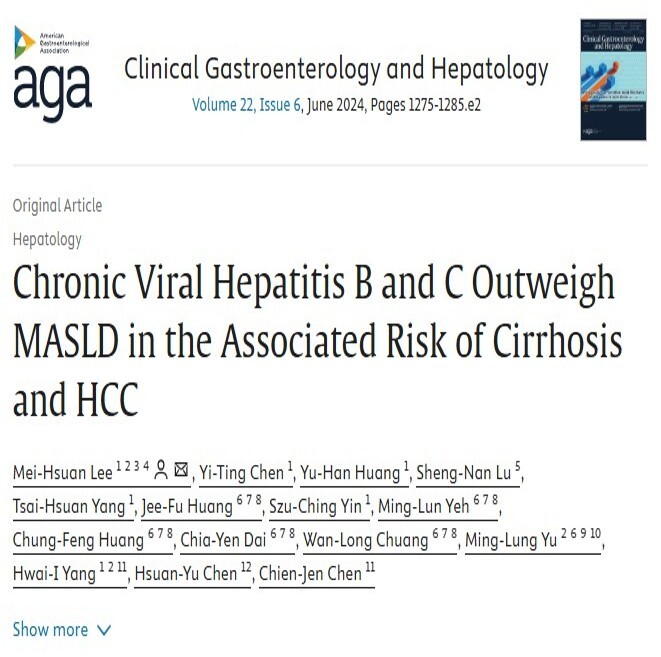NEWSLETTER OCT 2024
Chronic Viral Hepatitis B and C Outweigh MASLD in the Associated Risk of Cirrhosis and HCC

The impact of metabolic dysfunction-associated steatotic liver disease (MASLD) on the development of cirrhosis and hepatocellular carcinoma (HCC) by chronic hepatitis B (CHB) or C infection and antiviral treatment statuses is not well-known.
A total of 336,866 adults aged ≥30 years were prospectively enrolled in a health screening program between 1997–2013. MASLD was identified by abdominal ultrasonography and cardiometabolic profiles.
In the total population, 122,669 (36.4%) had MASLD. Over a mean follow-up of 15 years, 5562 new cases of cirrhosis and 2273 new cases of HCC were diagnosed. Although MASLD significantly increased the cumulative risks of cirrhosis or HCC (P < .0001), the associated risk was more pronounced when comparing CHB or C infection with the presence of MASLD. Stratifying the participants based on their MASLD and CHB or C statuses, hazard ratios (HRadj) with 95% confidence intervals for HCC were 8.81 (7.83-9.92) for non-steatotic liver disease (SLD) with CHB or C, 1.52 (1.32-1.74) for MASLD without CHB or C, and 8.86 (7.76-10.12) for MASLD with CHB or C, compared with non-SLD without CHB or C (all P < .0001). Among CHB or C patients who received antivirals during follow-up, MASLD was associated with increased risks of cirrhosis and HCC, with HRadj of 1.23 (1.01-1.49) and 1.32 (1.05-1.65), respectively.
These findings underscore the need to prioritize treatment of chronic viral hepatitis before addressing MASLD.(Link)
Reference: Lee, M. H., Chen, Y. T., Huang, Y. H., Lu, S. N., Yang, T. H., Huang, J. F., ... & Chen, C. J. (2024). Chronic viral hepatitis B and C outweigh MASLD in the associated risk of cirrhosis and HCC. Clinical Gastroenterology and Hepatology, 22(6), 1275-1285.

 r of Excellence for Metabolic Associated Fatty Liver
r of Excellence for Metabolic Associated Fatty Liver